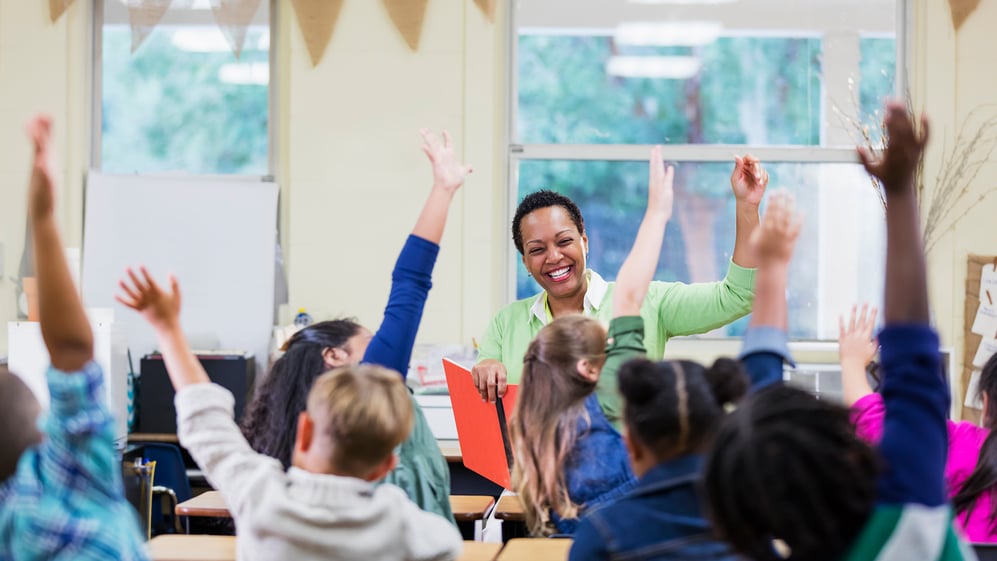A diverse classroom fosters a safe space for launching outreach. Our schools serve as outposts to the community, often providing our neighbors’ first interactions with God’s people. The “diversity” buzzword is not new to education, as many teachers, administrators, and homeschool parents have been working to incorporate diversity into the classroom for years.
A Need for Christ’s Love
What is different now? At the moment, our nation is at a crossroads. The truth is many of our students will return after break to remote, hybrid, or in-person learning as individuals in need of God’s loving touch. Distance from friends, positive adult role models, school pastors, and group dynamics have left a hole. Months of living in communities that have struggled and triumphed in ways to respond to racial divides, to nurture healthy relationships with those in authority, and to learn more about health risks have left many of our young people with questions. Our Lord tells us in His words from John 16:33 that “in Me you may have peace” and “in the world you will have tribulation.” He comforts us by telling us, “But take heart; I have overcome the world.” We must communicate this to our students in thought, word, and deed.
Part of our calling as Christians is to be ambassadors for Christ as we reconcile students to Him. In 2 Corinthians 5:14–16, we are told that Christ’s love allows us to stop evaluating others from a human point of view—that is, “according to the flesh” (v. 16). This means we do not take man’s view of diversity as a passing fad of summer hashtags or a buzzword to be used for selfish gain. Instead, we look to the God who LOVES diversity. The God who made us male and female—on purpose. The God who gave us the skin we’re in—on purpose. The God who welcomes the stranger and makes a home in heaven surrounded by multitudes from all tribes, nations, peoples, and languages. This is our Lord. Our God loves diversity, and He made us as we are on purpose and unites us in our Baptism.
Diverse Classrooms as a Cultural Learning Experience
As a child, I remember the first time I was “one of the few” in my classroom. Having attended both NYC public and Lutheran schools for my elementary education, I was usually surrounded by students who looked like me. In middle school, I had to switch sixth-grade classes due to testing four weeks into the term. My new class had only three students who looked like me and zero teachers who did. I was shocked, uncomfortable, and concerned about how the other students would treat me and how the teachers would handle things.
My diverse classroom expanded my friend circle immensely. I got to know students from different backgrounds and found out more about other cultures. Perhaps the most meaningful experience was inviting my friends to my Baptism celebration. To my surprise, three of my friends from non-Christian homes (Buddhist and agnostic) came and had a great time. Later, in my twenties, I found out from one of those friends that my Baptism was her first and only experience in a Christian congregation, and she remembers it to this day. Our classroom connection in our diverse environment provided a way for me to share my faith as a young Christian with girls who may not have heard the Gospel otherwise. Oftentimes, we may think that as the educator in the room we are the ones sharing the Gospel alone; however, we should also recognize that we provide students the opportunity as well! Without a school environment or classroom context where diversity is sought after and embraced, we miss these unique outreach opportunities.
Cultivating Classroom Diversity
How do we cultivate a diverse classroom? We work together to intentionally include all students in the narratives and images that shape life. This means taking the responsibility to expose our students to the experiences that affirm God’s Word in our lives and God’s love for all nations.
Diversity is not a “buzzword” for the Christian educator focused on outreach; it is a calling!
Here are a few tips on how to be intentional about diversity and inclusion in your classroom:
- Include diverse images of young people in your slides and examples for classroom activities and presentations. Use Google to add keywords for specific races, genders, and languages.
- Expand your reading materials to include images and stories of the underrepresented.
- Speak boldly on the positive and negative histories of our nation. Our God forgives!
- Pray for specific communities, groups, and nations by name. Bring in guest speakers to share experiences and provide context. Get creative on Zoom or in person!
Read essays from a multitude of teachers, DCEs, theologians, parents, and more to see how you can cultivate diversity and new concepts in your classroom with The Pedagogy of Faith: Essays on Lutheran Education.















